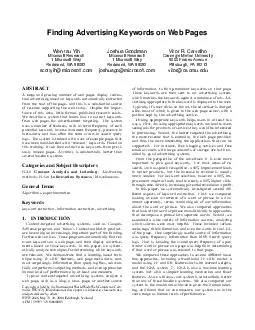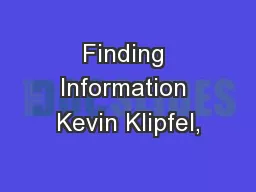PDF-Finding Advertising Keywords on Web Pages Wentau Yih Microsoft Research Microso
Author : alida-meadow | Published Date : 2014-10-08
com Joshua Goodman Microsoft Research 1 Microsoft Way Redmond WA 98052 joshuagomicrosoftcom Vitor R Carvalho Carnegie Mellon University 5000 Forbes Avenue Pittsburgh
Presentation Embed Code
Download Presentation
Download Presentation The PPT/PDF document "Finding Advertising Keywords on Web Page..." is the property of its rightful owner. Permission is granted to download and print the materials on this website for personal, non-commercial use only, and to display it on your personal computer provided you do not modify the materials and that you retain all copyright notices contained in the materials. By downloading content from our website, you accept the terms of this agreement.
Finding Advertising Keywords on Web Pages Wentau Yih Microsoft Research Microso: Transcript
Download Rules Of Document
"Finding Advertising Keywords on Web Pages Wentau Yih Microsoft Research Microso"The content belongs to its owner. You may download and print it for personal use, without modification, and keep all copyright notices. By downloading, you agree to these terms.
Related Documents














